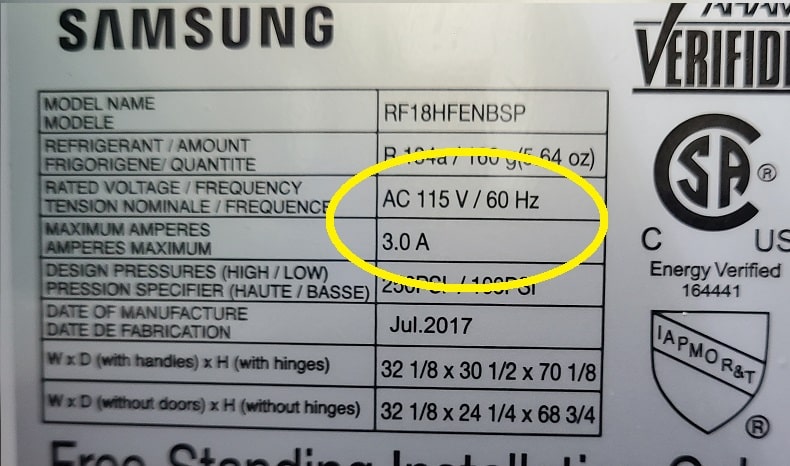RV Photo voltaic programs will be something from a single panel you intention on the solar whilst you’re parked someplace, to a dozen or extra panels mounted to your roof. How a lot photo voltaic is the correct quantity? Sizing your RV Photo voltaic system correctly can prevent money and time in addition to be sure your system performs as anticipated. This text is concentrated on determining simply what number of photo voltaic panels you want.
RV Photo voltaic System Sizing
Individuals have advised us their solely massive street block to getting a system, isn’t understanding how a lot photo voltaic they want. I’ll even admit I didn’t know both, and bought an multi function package that works nice, however isn’t fairly as massive as I wanted. You may learn my evaluation of that package right here.
It doesn’t matter for those who’re residing the Van Life or RV Life or rocking a Faculty Bus Conversion, the way in which you choose the scale of your system is similar.
Step one is to learn how a lot energy you will be utilizing. That is essentially the most tedious half, but in addition crucial. It’s essential to add up the whole electrical energy used from each equipment you may have. The best approach to determine the whole energy is to transform your entire calculations into watts. Don’t fear, there may be a simple approach to do that too!
RV Photo voltaic Energy Math
All your main home equipment can have a sticker on them someplace that claims what number of Amps its attracts and what number of Volts it runs on. For instance, we now have a residential fridge in our RV and contained in the door I discover the facility ranking sticker under.


Right here you see that our fridge runs on 115 Volts and attracts 3 Amps. To transform this to watts, we use the method AMPS x VOLTS = WATTS. So doing 3 x 115 = 345, we all know that our fridge is utilizing 345 Watts per hour when it’s operating. I determine the fridge is just truly operating half of the day, and in standby mode the opposite half, so we take our Hourly Wattage (345) and multiply that by the Run Time (12) per day and get 4,140 Whole Watts Per Day.
Straightforward proper? Now we simply have to try this similar factor for all of the home equipment in your RV, and write it down, so we are able to tally up the whole watts per day for all of them. As soon as we now have a complete wattage for the whole lot we’re going to be operating in our RV, then we are able to transfer on to the following step, which is choosing a kind of battery to retailer our RV Photo voltaic Energy.
Flooded Lead Acid
On the subject of RV Batteries there are 3 important sorts you must select from. The commonest one, and the one that’s almost certainly in your RV from the manufacturing unit, is a Flooded Lead Acid (FLA) Deep Cycle.
It’s just like the battery in your automobile, however designed to have the ability to drain down earlier than being recharged. The FLA model of battery is able to a 50% discharge with out damaging it earlier than it must be recharged.
A FLA Deep Cycle is nice for a median of 5 years earlier than they should be changed. Whereas they do have the bottom up entrance prices, they do require some upkeep to maximise their life span. After a median of 200 discharge and recharge cycles, a FLA battery will begin to have a decline within the quantity of vitality they will retailer.
FLA batteries additionally should be in an exterior compartment, and that compartment must be vented to the skin air. In the course of the charging cycle they produce fuel emissions that might kill you if they’re in an inside space of your RV or Van.
AGM Batteries
The following sort of battery known as an Absorbent Glass Matt (AGM) Battery. An AGM battery is a sophisticated model of the usual FLA Battery. One main attraction to them is that they’re fully sealed, so there isn’t a hazard of battery acid being spilled out of them.
AGM Batteries are additionally upkeep free and final on common twice as lengthy than a typical FLA Battery. On the up entrance value they will value 20 to 50 p.c extra per battery relying on the scale of the battery.
LiFePO4 Batteries
The final sort of battery is a Lithium Iron Phosphate (LiFePO4). That is thought of to be the holy grail in RV Photo voltaic programs. A LiFePO4 battery will be discharged 80 p.c with out lack of energy or doing harm to the battery itself. Most LiFePO4 batteries will final by way of 5,000 charging cycles.
At a price of 1 cost cycle per day with a photo voltaic system, it ought to final you round 12 years in your RV. One other benefit to the LiFePO4 is it could deal with a lot bigger sustained energy utilization than its lead acid counterparts. In case you are planning on operating an AC unit together with your photo voltaic system, that is the way in which to go.
The LiFePO4 does have the best up entrance value, at a median of three instances the worth of a FLA battery, nonetheless they’re additionally just one third the load. Relying on the scale of your RV Photo voltaic system you could want a number of batteries to retailer the facility, in order that weight can add up quick.
How Many Batteries?
Upon getting determined which sort of battery is the very best match on your finances and energy wants, the following step is to determine simply what number of batteries you want. For this we’re going to seek advice from the Whole Watts Per Day from step 1. So shall we say that after you added all of it up, you bought a complete of 10,000 watts per day.
You may convert the Amp Hours of the battery you select into watts utilizing the identical method to maintain the whole lot simple. For this instance lets assume we’re going to use a 200 Amp Hour LiFePO4 battery. So doing our math of 200 Amp Hours X 12 Volts = 2,400 Watts.
As a way to run the whole lot for twenty-four hours and not using a recharge, you would want 5 batteries. If you need to have the ability to run the whole lot for 48 hours and not using a recharge, you would want 10 batteries. You’re solely restricted on the variety of days you go by your individual finances and obtainable battery house.
Many RV Photo voltaic professionals advocate with the ability to run for 48 hours on battery energy alone in case of foul climate.
How Many RV Photo voltaic Panels Do I Want?
So right here is the place the maths will get somewhat difficult, however not unattainable. It’s essential to know the way a lot Peak Solar you will get every day to cost your batteries again to 100 %. Close to the equator you get extra, close to Canada you get much less. We’re going to use Common US Irradiance of 5.3 to assist determine this one out. Since we’re going to be touring in every single place, the quantity will change anyway primarily based in your location.
To learn how a lot Whole Photo voltaic Energy you want, you divide your every day want by the 5.3 common Peak Solar time. Utilizing our 10,000 watt instance from above, we divide 10,000 by 5.3 for a complete of 1,886 Watts Of Photo voltaic Panels Wanted. To provide your self a cushion, and make your math simpler, spherical it as much as 2,000 Watts Of Photo voltaic Panels.
There are a number of mixtures you are able to do to attain the two,000 Watts you want. You are able to do 20 One Hundred Watt Panels. Or you are able to do 10 Two Hundred Watt panels. You are able to do 5 4 Hundred Watt Panels. You see what I’m getting at.
The approximate RV Photo voltaic Panel dimension is 2 Toes by 4 Toes. How a lot obtainable roof house you may have, will decide how manel panels you may truly match up there, which is able to inform you what wattage you want. For instance, say you may have sufficient room on the roof of your RV to solely match 4 panels. As a way to get the wanted 2,000 watts, you would want 4 500 Watt panels.
What Measurement Photo voltaic Cost Controller Do I Want?
The reply to this query will rely fully on the Photo voltaic Panel Voltage, Photo voltaic Panel Wattage, and for those who plan to wire your Photo voltaic Panels in Sequence, Parallel, or Sequence-Parallel. Your finest plan of action is to ask your RV Photo voltaic supplier what gauge wire you will have to go from the roof of your RV, which approach the panels needs to be wired collectively, and which of their cost controllers mates with the remainder of the system the very best.




